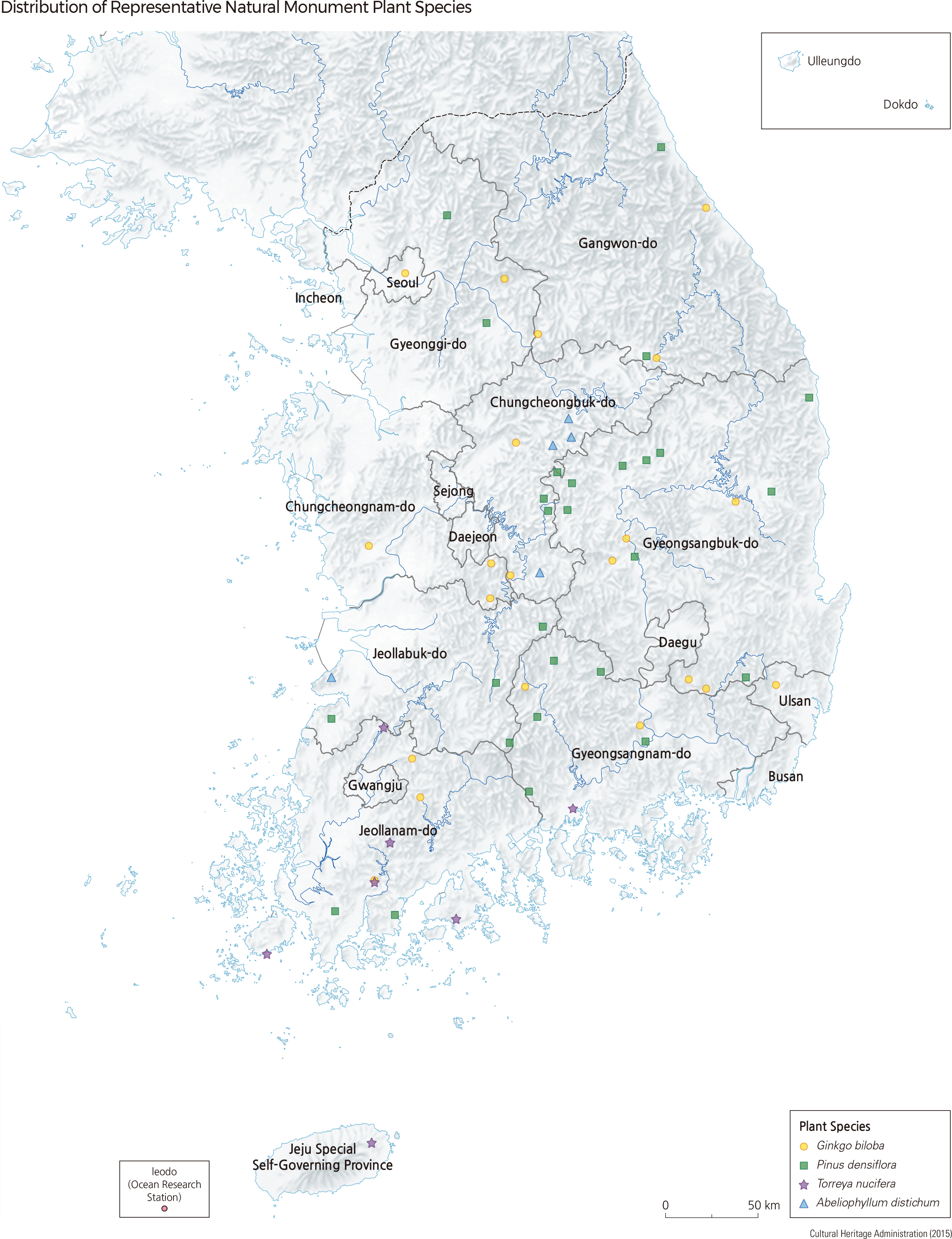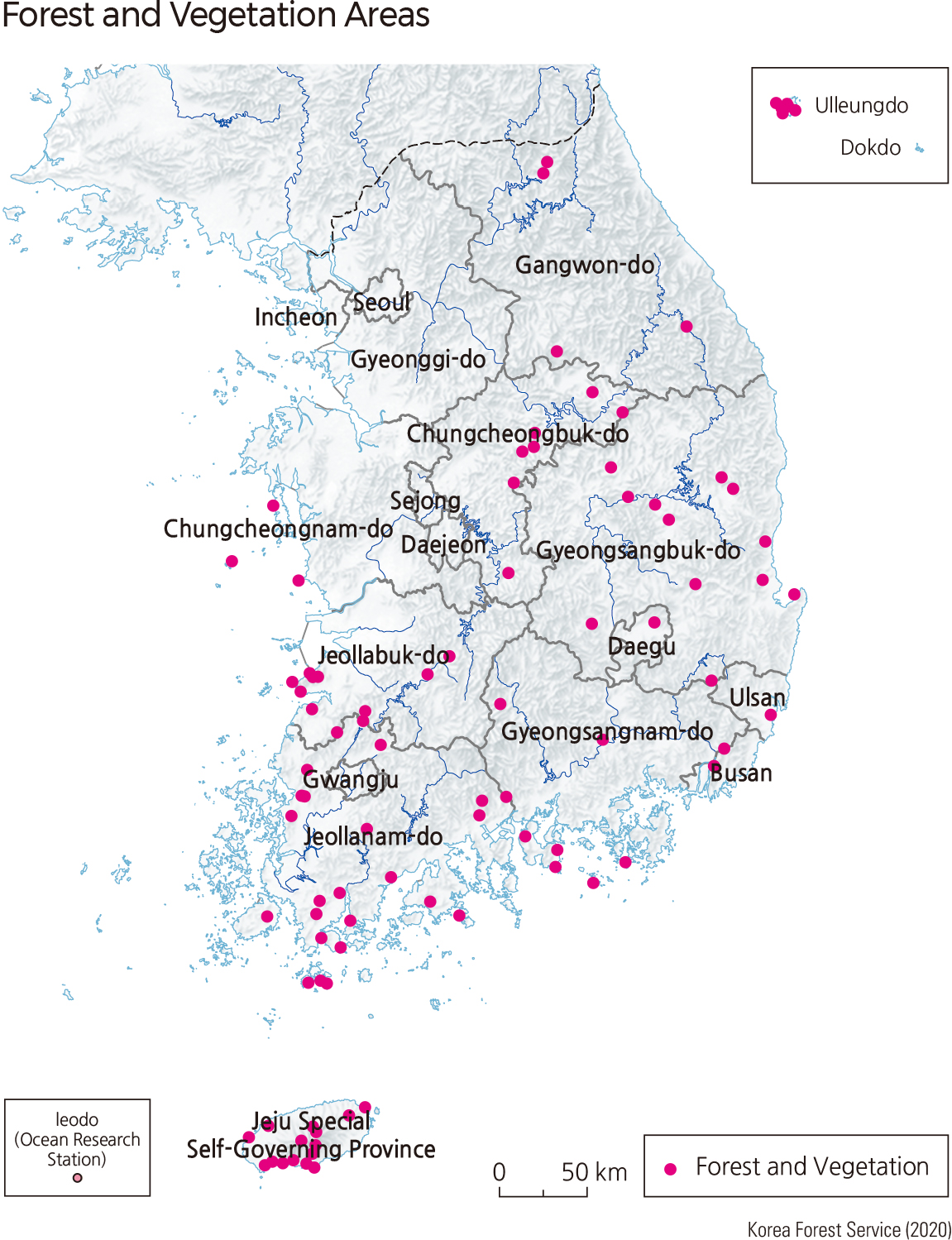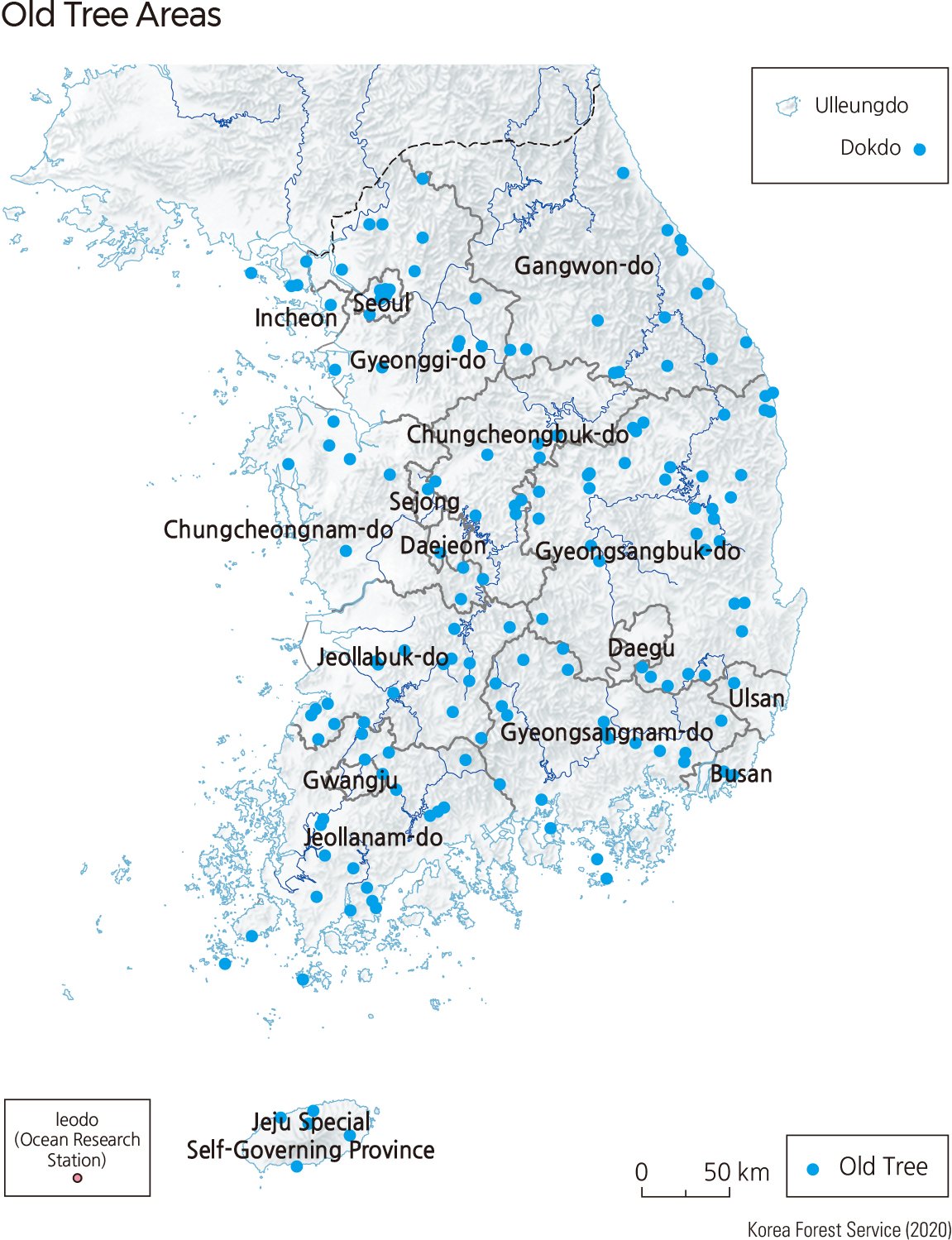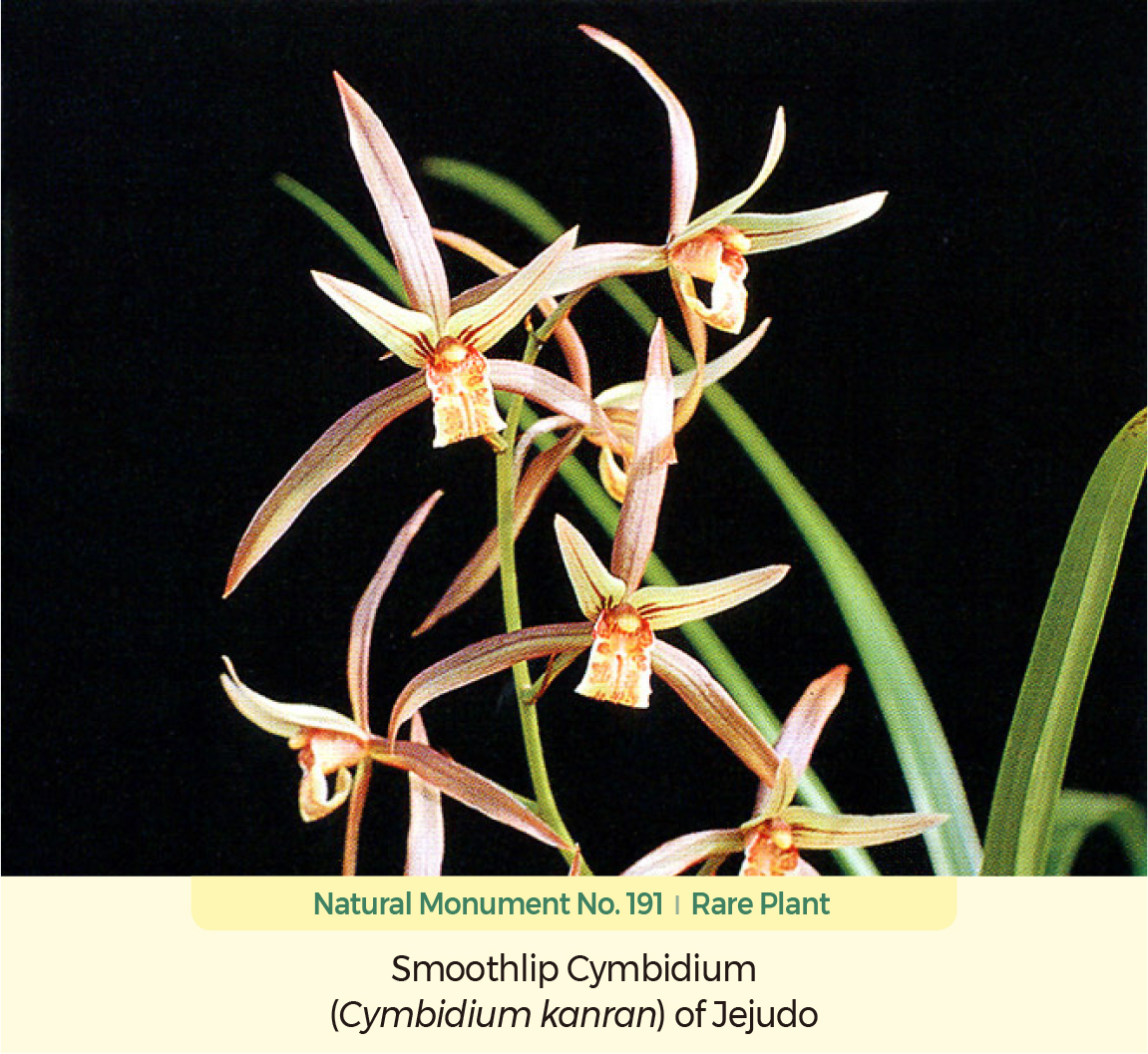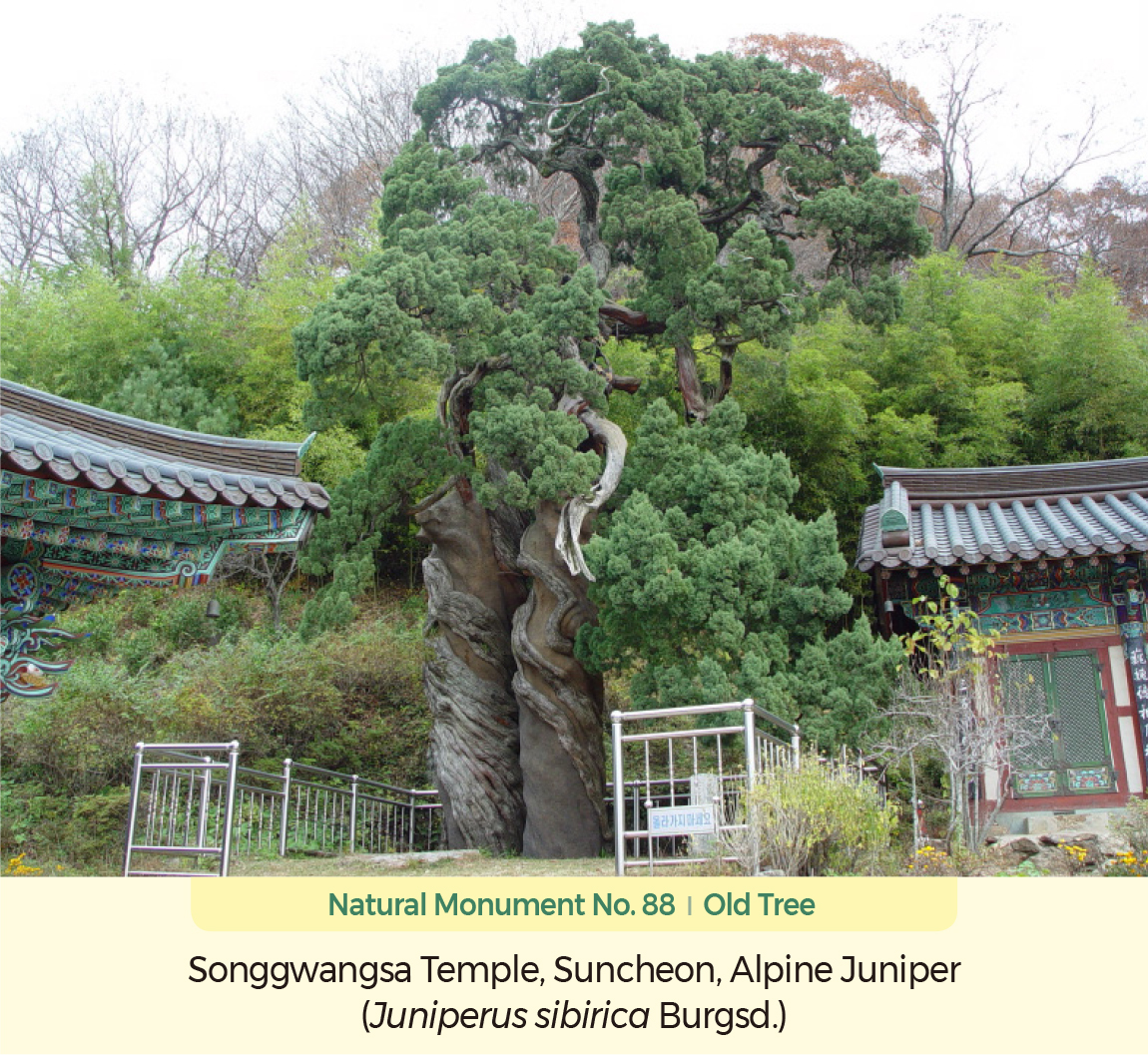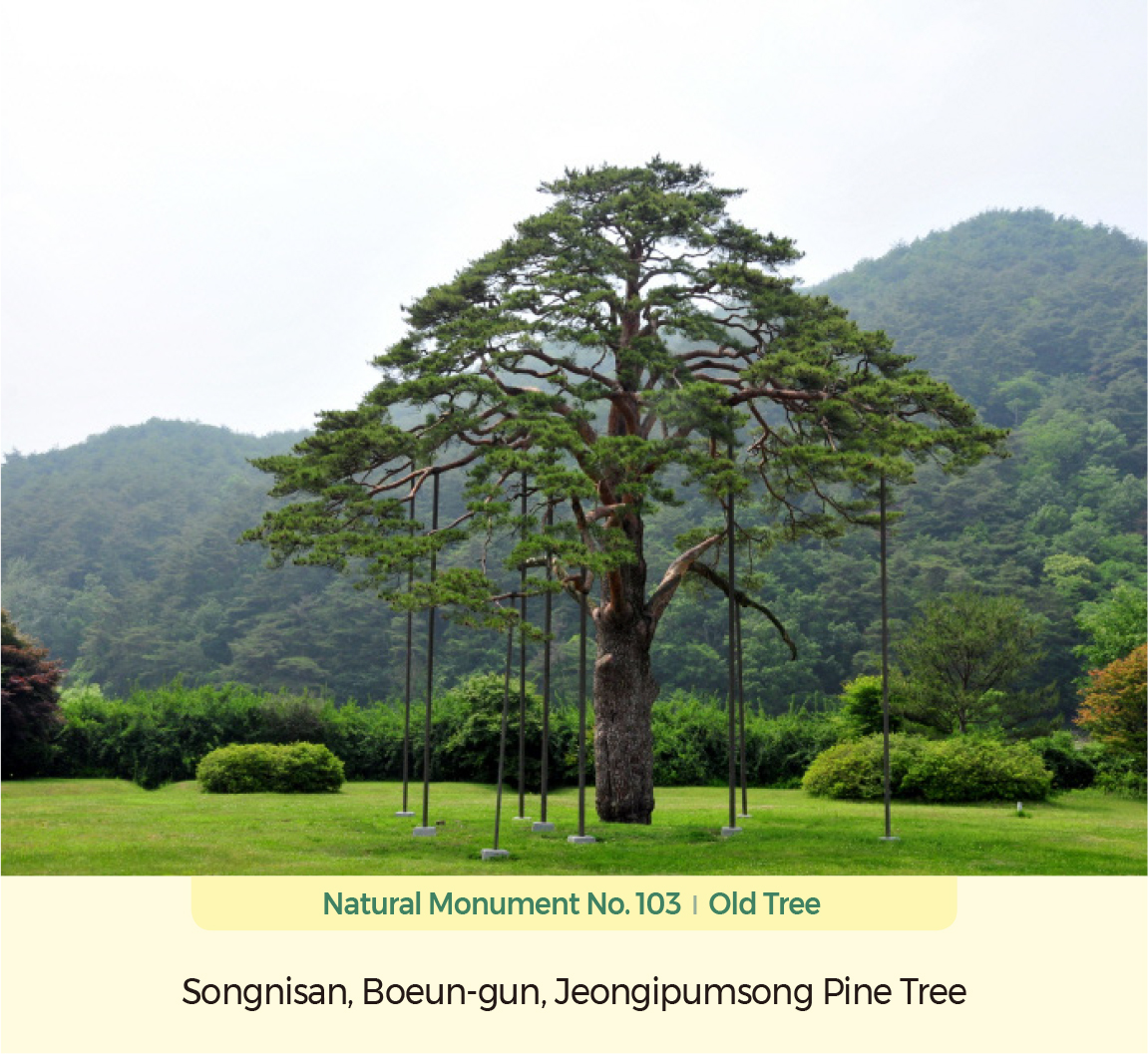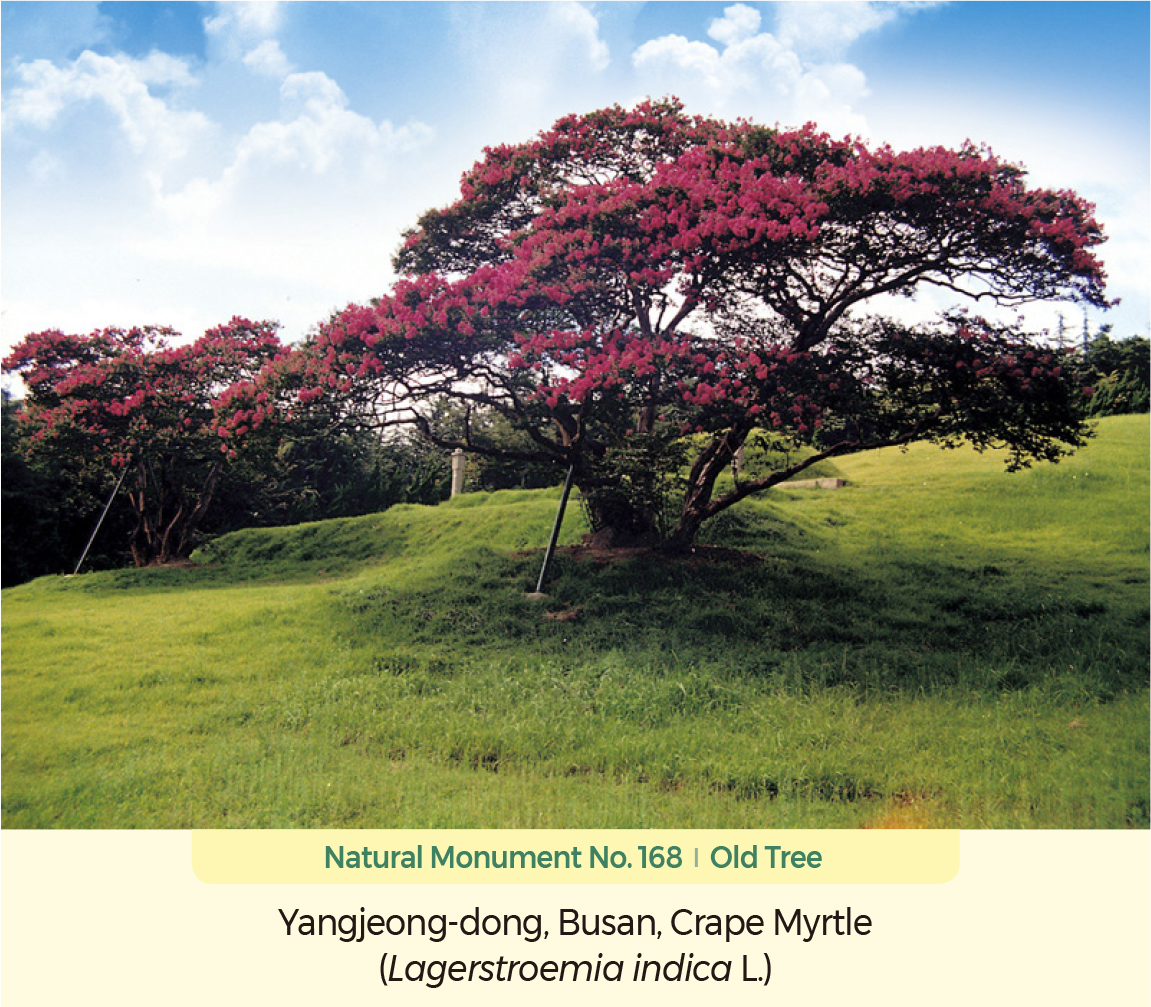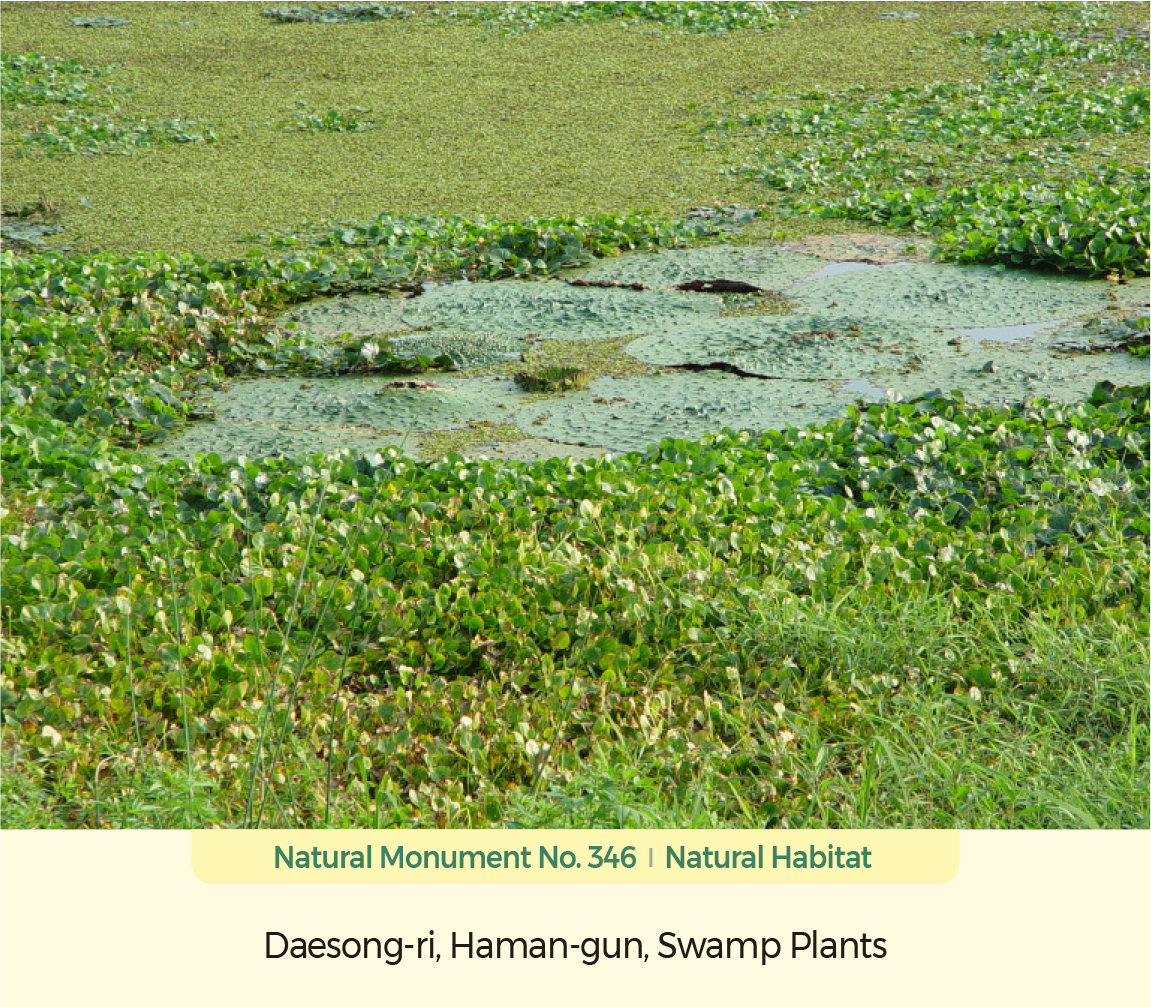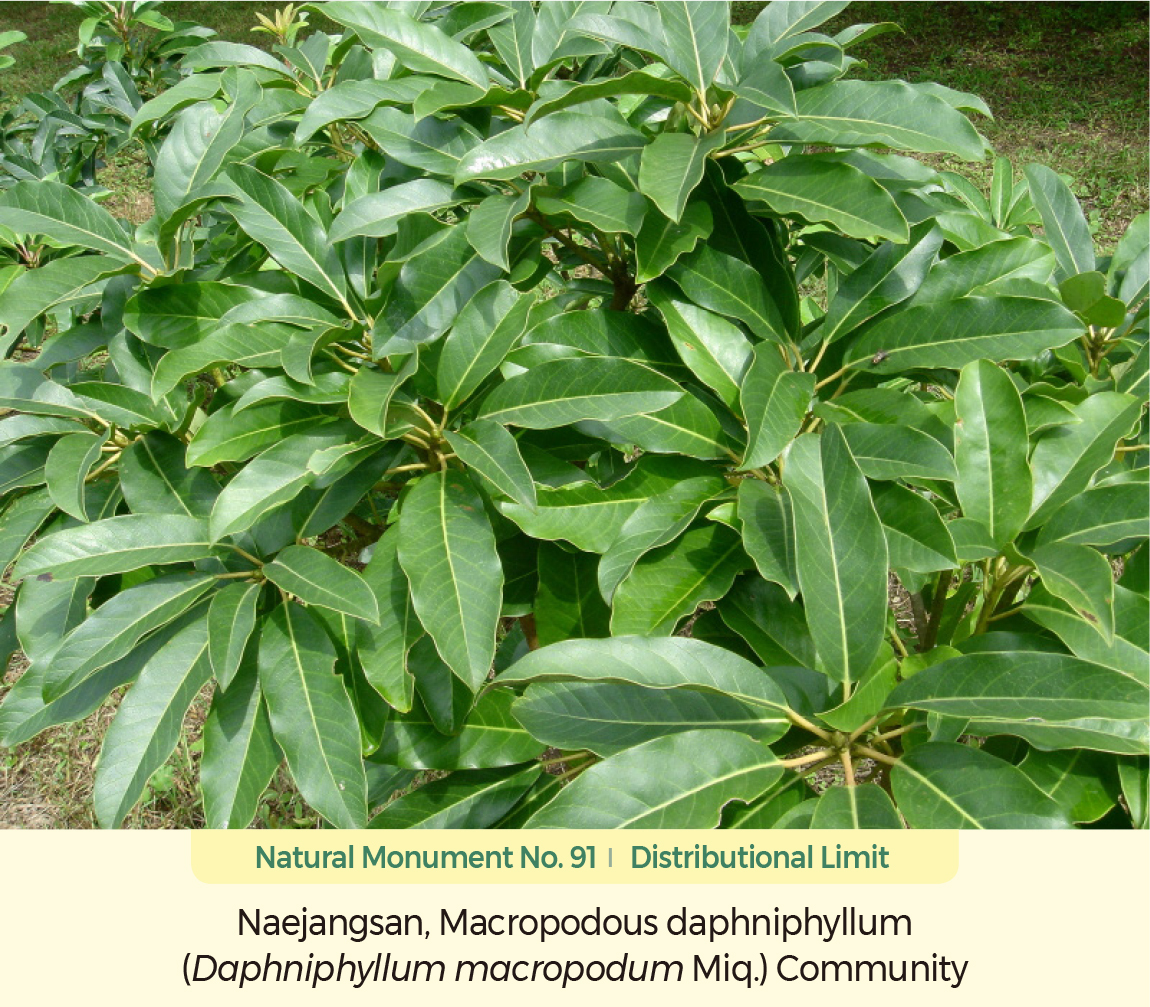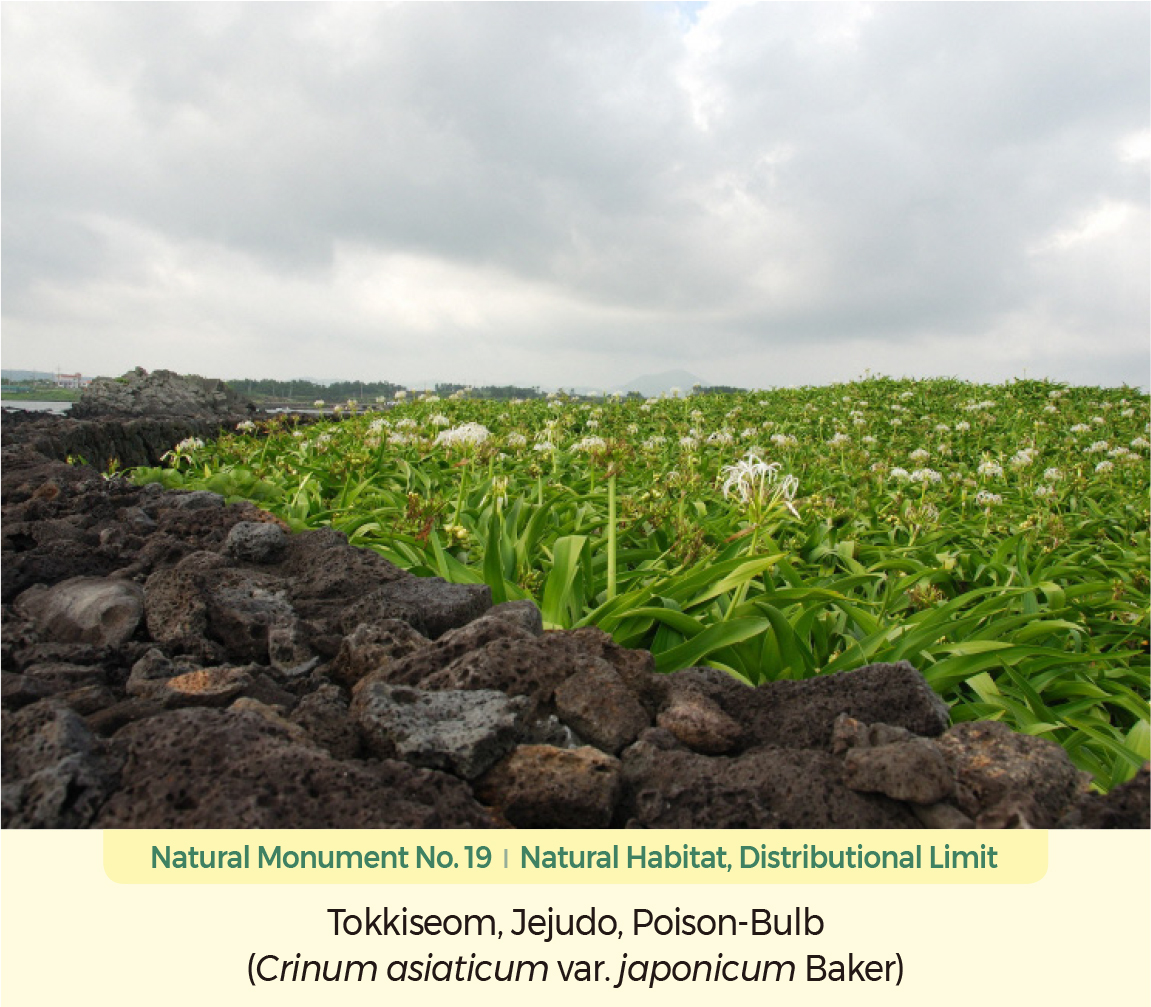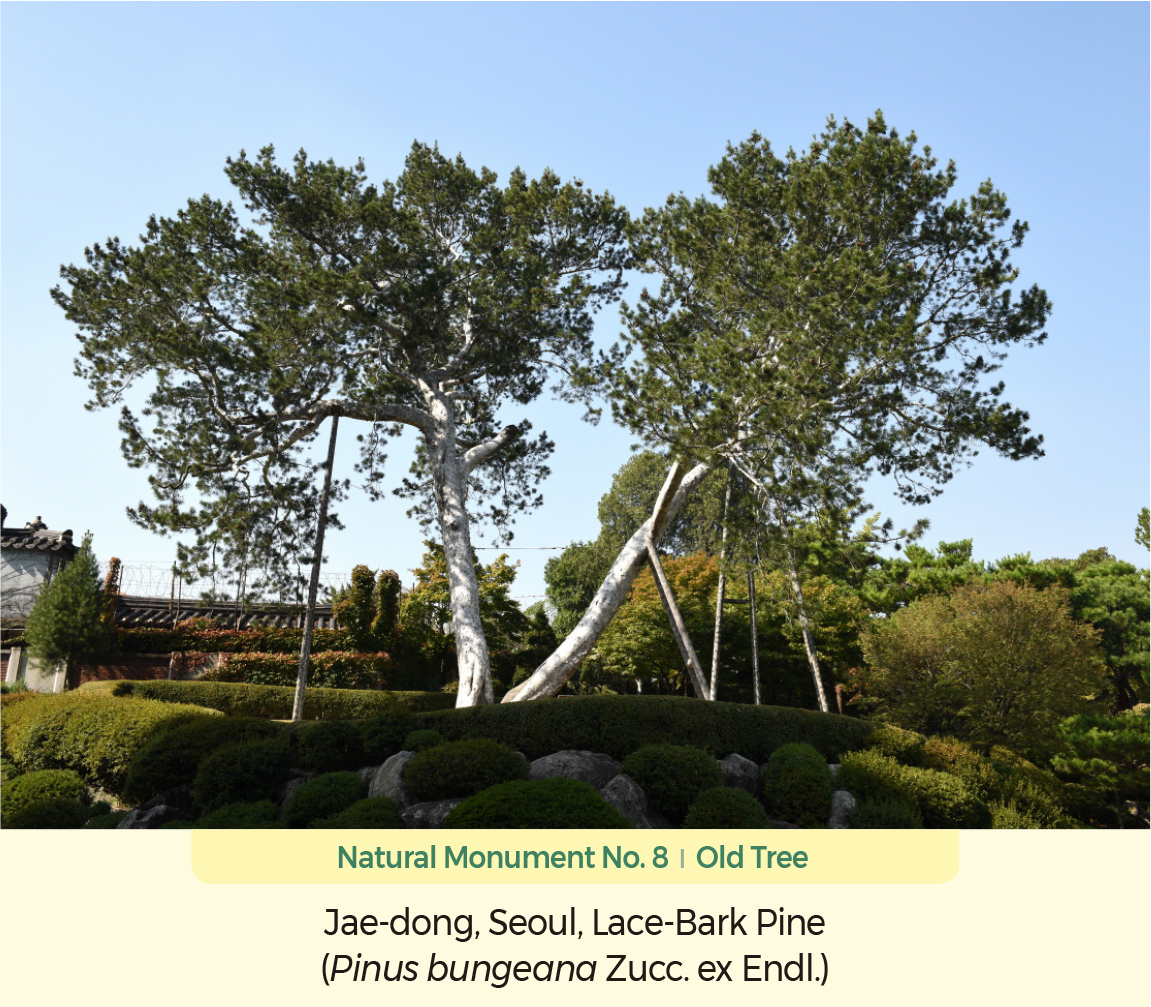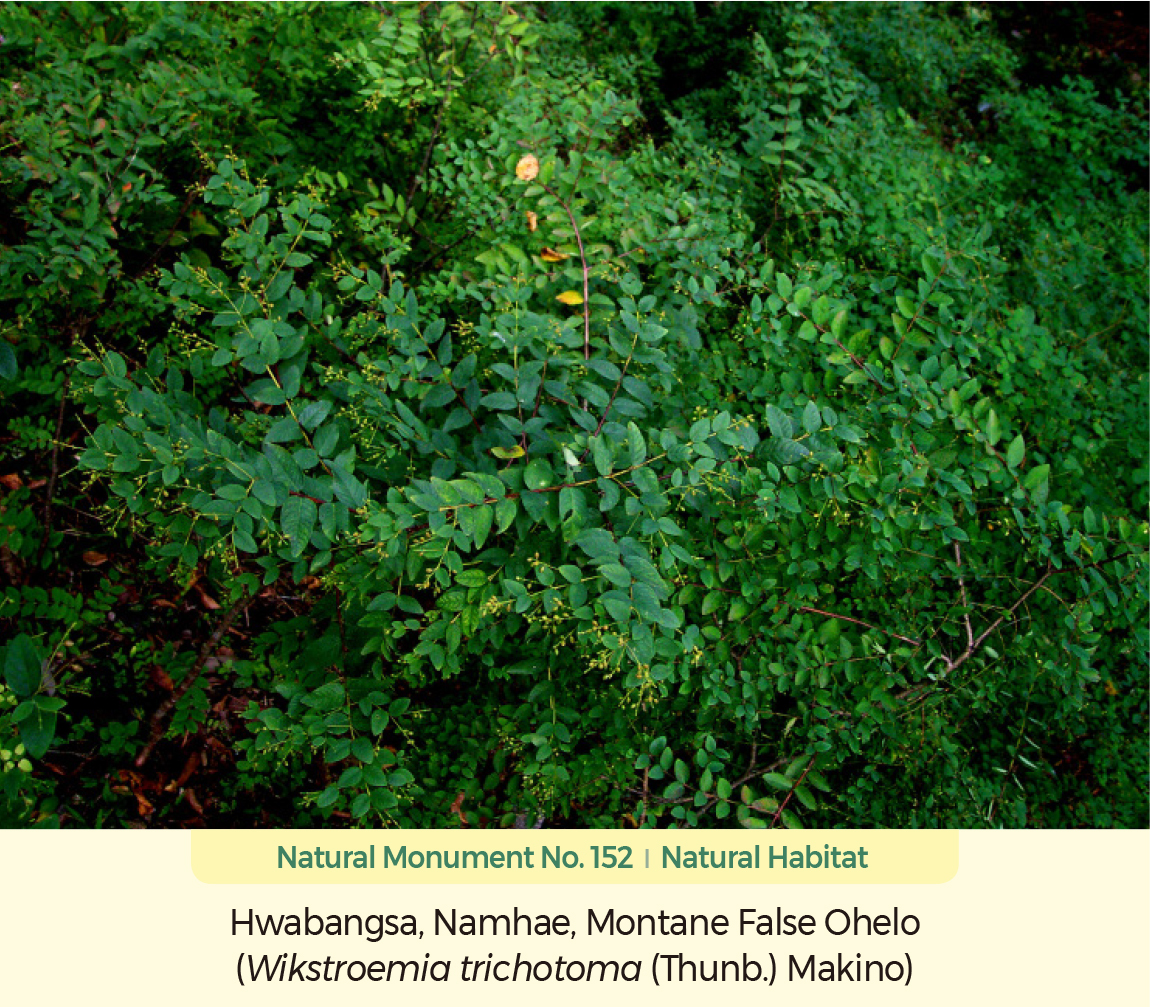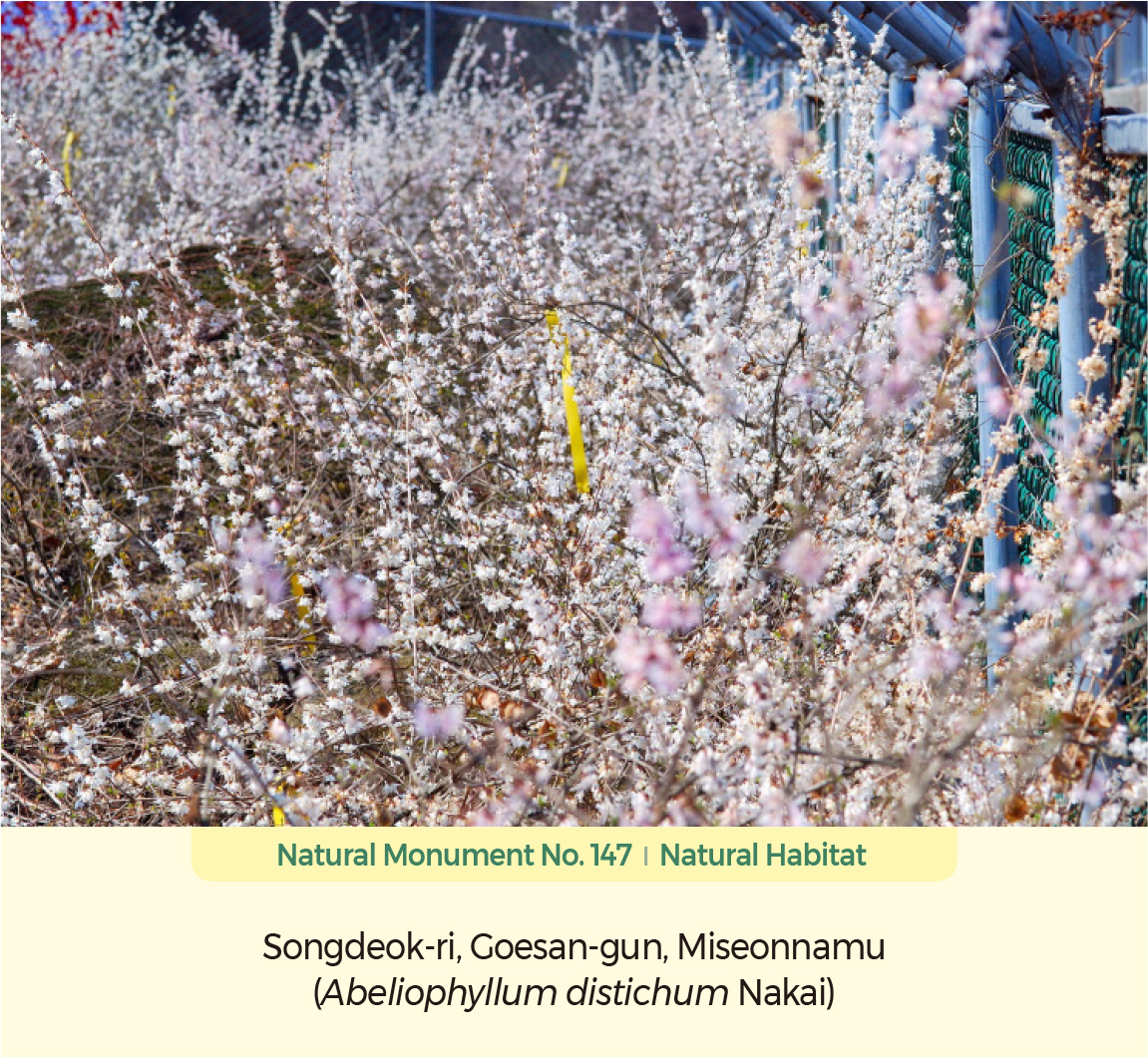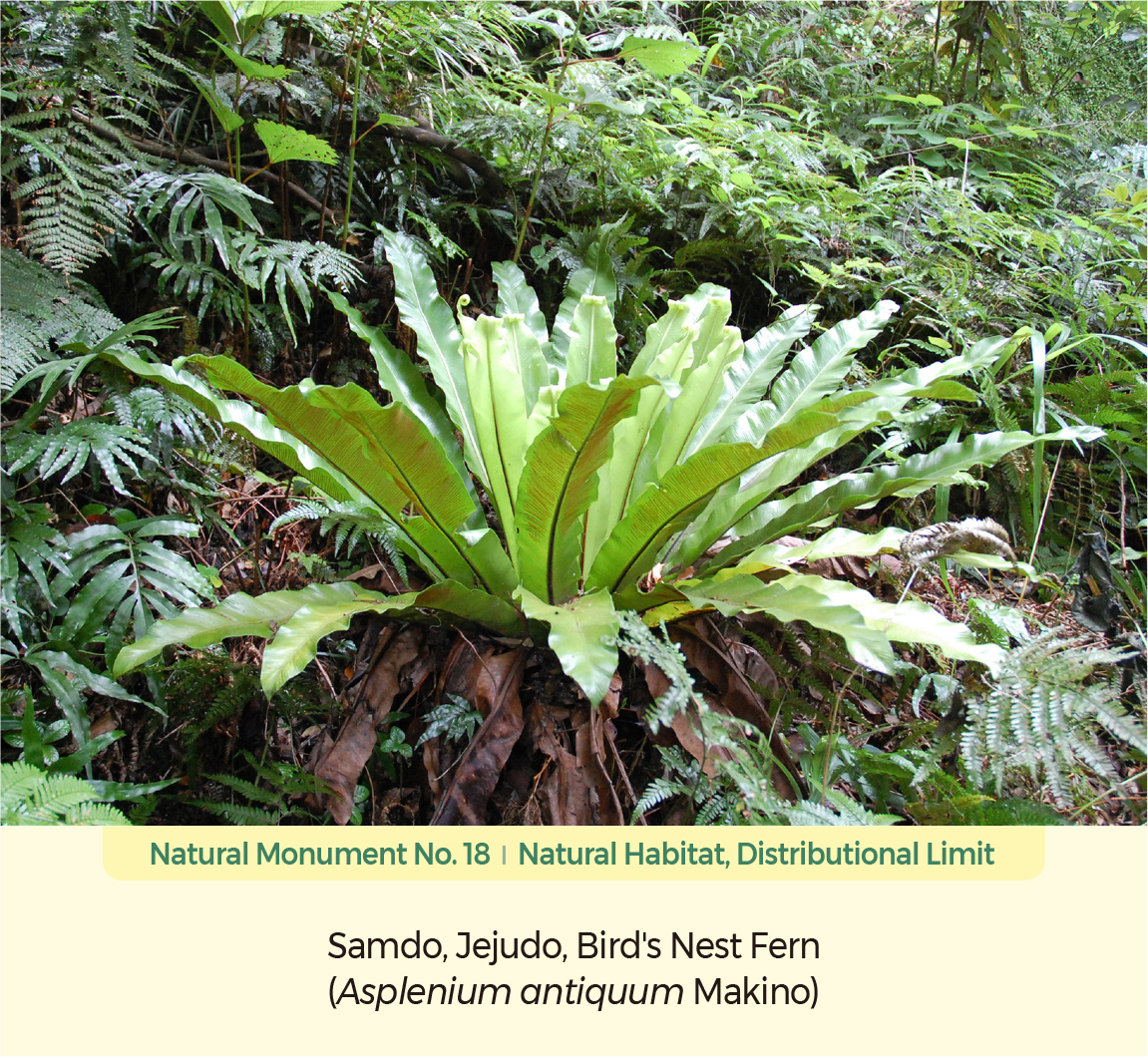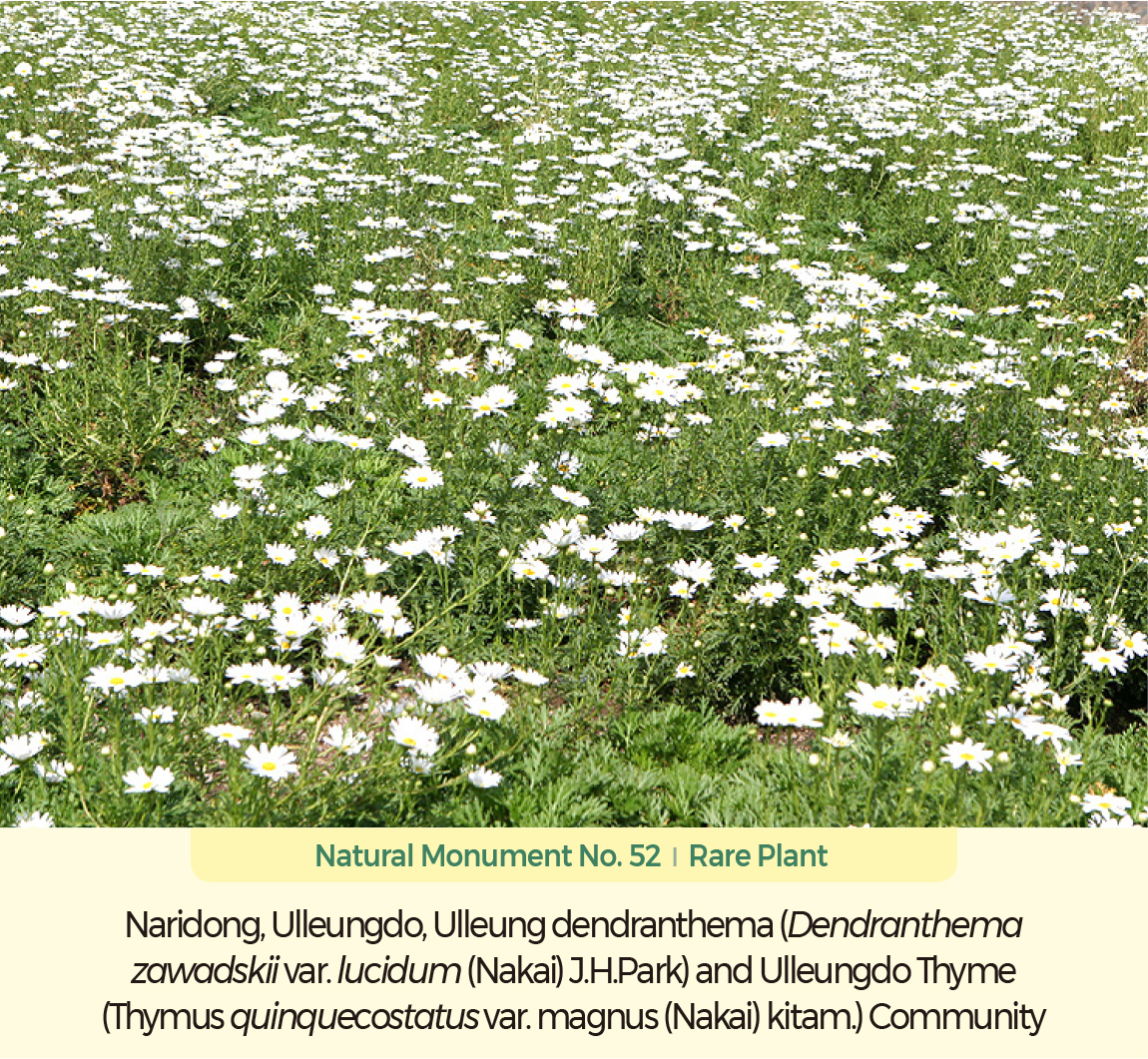English II 2020
Natural monuments bear high academic and aesthetic value. Thus, legal protection and conservation have been adapted. Natural monuments include animals and their habitats, plants and their natural colony areas, minerals, caves, and other natural and inorganic substances. As of 2020, there were 264 plant natural monuments, including 172 old trees, 19 rare plant species, 13 distributional limits, 13 natural habitats, 24 forest and vegetation areas, and 23 village groves.
State-designated plant natural monuments include endemic plant species, and plant species growing in special environmental conditions such as dry land, wetlands, rivers, waterfalls, and hot springs. The list of state-designated plant natural monuments also includes plant species at their geographical distributional limit, famous trees, old trees, communities of broadleaf evergreen vegetation, specific plant communities, plant species at the distributional limit of their range, abnormally-shaped trees, holy trees at sanctuaries and village shrines, forests for fish shelter, primeval or virgin forests, alpine plants, and artificially planted historic woodlands.
State-designated plant natural monuments are mostly Ginkgo (Ginkgo biloba L.), Japanese Zelkova (Zelkova serrata), Korean Red Pine (Pinus densiflora), and Chinese Juniper (Juniperus chinensis). Many-stem Korean Red Pine (Pinus densiflora f. multicaulis Uyeki), Retusa Fringetree (Chionanthus retusus Lindl. & Paxton), Lace-bark Pine (Pinus bungeana Zucc. ex Endl.), Hoehwanamu (Sophora japonica L.), Black Pine (Pinus thunbergia Parl.), Oriental Cork Oak (Quercus variabilis Blume), Maesilnamu (Prunus mume (Siebold) Siebold & Zucc.), Nut-bearing Torreya (Torreya nucifera (L.) Siebold & Zucc.), Giant Pussy Willow (Salix chaenomeloides Kimura), Prickly Castor Oil Tree (Kalopanax septemlobus (Thunb.) Koidz.), Trifoliate Orange (Citrus trifoliata L.), Scabrous Aphananthe (Aphananthe aspera (Thunb.) Planch.), and Thunberg's Bay-tree (Machilus thunbergii Siebold & Zucc.) are also natural monuments. Among the old trees, most of the designated natural monuments are Ginkgo, Japanese Zelkova, Korean Red Pine, and Chinese Juniper. Pine trees, including Korean Red Pine, Many-stem Korean Red Pine, Lace-bark Pine, and Black Pine, are designated the most. Old trees, communities, and the northern distributional limit of nut-bearing torreya are state-designated natural monuments of Korea. The natural habitats of the endemic species, Miseonnamu (Abeliophyllum distichum), are also state-designated natural monuments of Korea.
Rigid-branch Yew (Taxus cuspidata Siebold & Zucc.) is an evergreen tree belonging to the Taxaceae family that grows in Korea, Japan, Manchuria, and Russia. In Korea, it mainly grows on Baekdudaegan, a backbone of the Korean Peninsula. It has a reddish-brown heartwood. Flowering occurs in April, and red arils ripen from September to October. The woody part of the plant is widely used to make handicrafts such as checkerboards and woodwork, and the fruit is used for food and medicinal purposes.
The Rigid-branch Yew community (Natural Monument No. 244) in Sobaeksan and old Rigid-branch Yew trees (Natural Monument No. 433) in Duwibong, Jeongseon-gun are designated as Natural Monuments.
In the Rigid-branch Yew community (Natural Monument No. 244) in Sobaeksan, over 100 old trees grow on the western part of the peak of Birobong. The stems are twisted, and the side branches are bent up and down to show a mysterious appearance. Their height is about 7 m. The circumference at 1.5 m from the base varies. Branches grow in all directions at 2 m or lower due to the influence of strong wind and snow. Other trees, including Oriental Flowering Cherry (Prunus jamasakura Siebold ex Koidz.), Asian Hazel (Corylus heterophylla Fisch. ex Trautv.), and Mongolian Oak (Quercus mongolica Fisch. ex Ledeb.) grow around the yew community. A community of Modemipul (Megaleranthis saniculifolia), one of the species endemic to Korea, lives near the ridge. The Rigid-branch Yew community in Sobaeksan is Korea's representative Rigid-branch Yew community and has been designated as a natural monument because of its high biological preservation value.
Three old Rigid-branch Yew trees (Natural Monument No. 433) grown on the ridge of Duwibong, Jeongseon-gun. The three yew trees stand side by side. The age of the yew tree growing in the center is estimated to be about 1,400 years, and the age of the other yew trees is estimated to be 1,200 years. These yew trees are beautiful in shape and the oldest of their kind in Korea with great academic value.
Smoothlip Cymbidium (Cymbidium kanran Makino) blooms in the cold winter from December to January. It has 3–4 leaves 20–70 cm long. It is distinguished from Goering Cymbidium (Cymbidium goeringii (Rchb.f.) Rchb.f.) because the leaves have sharp tips and soft edges and grow flat. Flowers blooming in winter are yellow-green or purple in color and are very fragrant.
Smoothlip Cymbidium in Jejudo grows at the entrance of Donnaeko Valley and the evergreen forest between Sioreum and Seondol (south of Hallasan), which is located at an altitude of 700 m. These areas are at the northern distributional limit in which Smoothlip Cymbidium can grow wild. Smoothlip Cymbidium is very rare in Korea, so it is the only plant for which the species itself is designated as a natural monument (Natural Monument No. 191). The Donnaeko Valley was designated as Natural Monument No. 432 to protect the colony of Smoothlip Cymbidium that grows in the valley.
Macropodous Daphniphyllum (Daphniphyllum macropodum Miq.) is a small, arboreous evergreen tree belonging to the Daphniphyllaceae family that grows in Korea, China, and Japan. In Korea, it is distributed in Anmyeondo of Chungcheongnam-do, Ulleungdo of Gyeongsangbuk-do, and Naejangsan of inland Jeollabuk-do. Generally, it grows in warm regions such as the southern coastal area of Jeollanam-do and Jejudo.
Oriental herbal medicine or folk remedies have used the leaves and bark of Macropodous Daphniphyllum as a cure for acute pleurisy and peritonitis or as a diuretic and an anthelmintic. This tree was once greatly damaged because its leaf shape resembles that of Short-fruit Rosebay (Rhododendron brachycarpum D.Don ex G.Don), which is also used as a medicinal plant. After the new leaves of this tree grow, the old leaves fall off. For this reason, Japanese people regard this tree as a symbol of January, and they decorate their floors with the leaves of this tree on the first day of the New Year.
Unusually large Macropodous Daphniphyllum trees are rare in Korea and grow in the Macropodous Daphniphyllum community in Naejangsan, which was designated as Natural Monument No. 91 in recognition of its academic value as the northern distributional limit. When broadleaf evergreen forests in the Korean Peninsula expand due to global warming, the area of the Macropodous Daphniphyllum community is expected to increase. |
